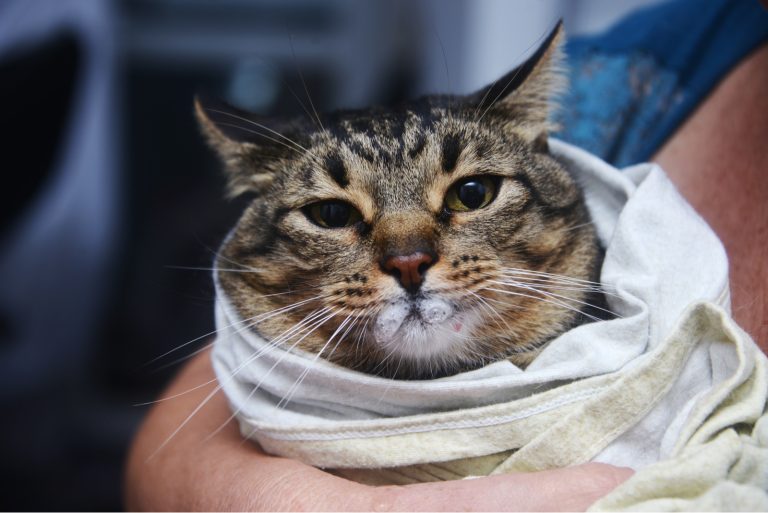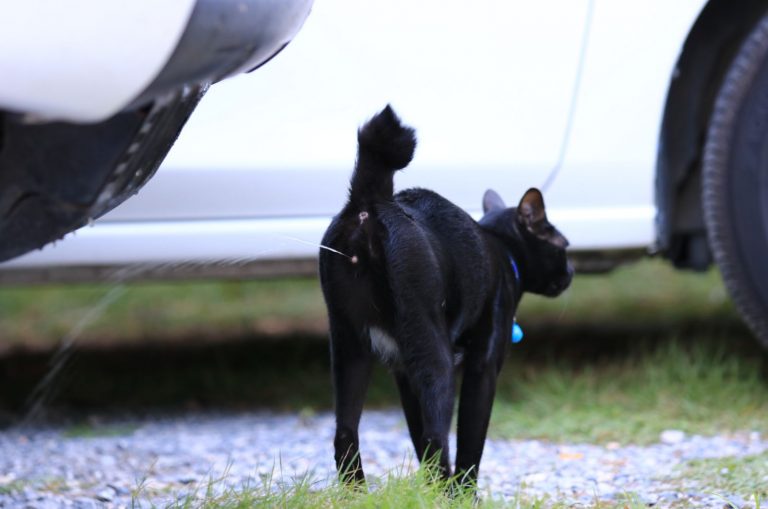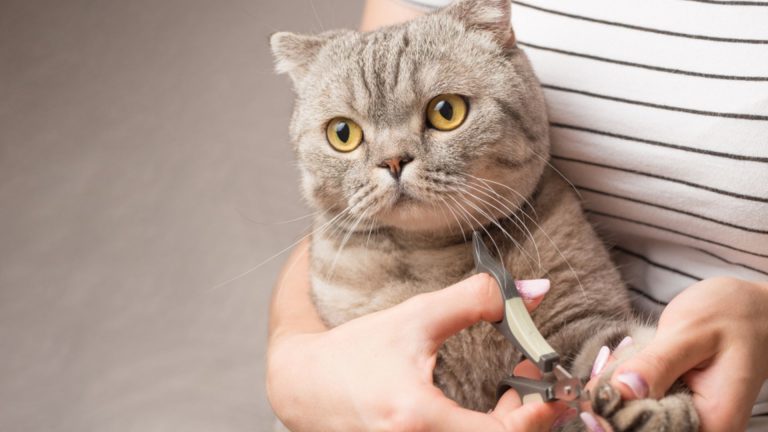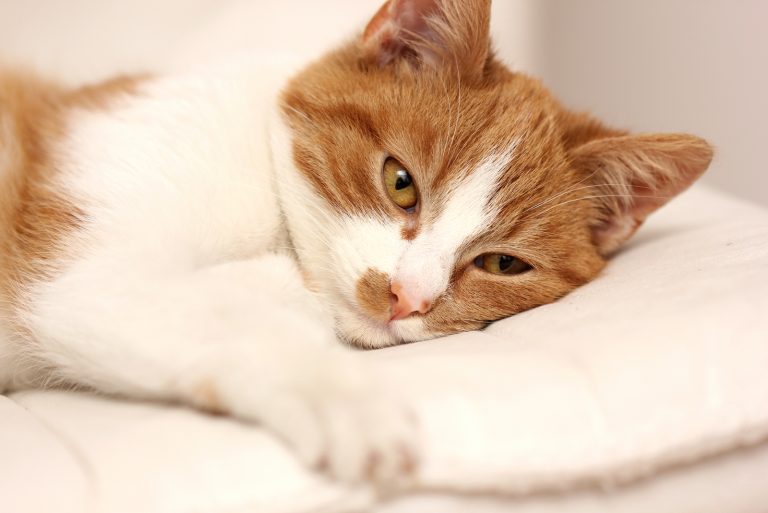8 Signs Of Infection After Neutering A Cat: Spot Them Quickly

Neutering a cat is an essential part of responsible pet ownership, but it is not without risks. In fact, infection is one of the most common complications after a cat has been neutered!
If you’ve recently had your cat neutered or you are planning on doing so, you may be wondering what signs to look out for to ensure your feline friend is healing properly.
This article will discuss the signs of infection after neutering a cat, and what to do if an infection is suspected.
Signs of Infection After Neutering A Cat
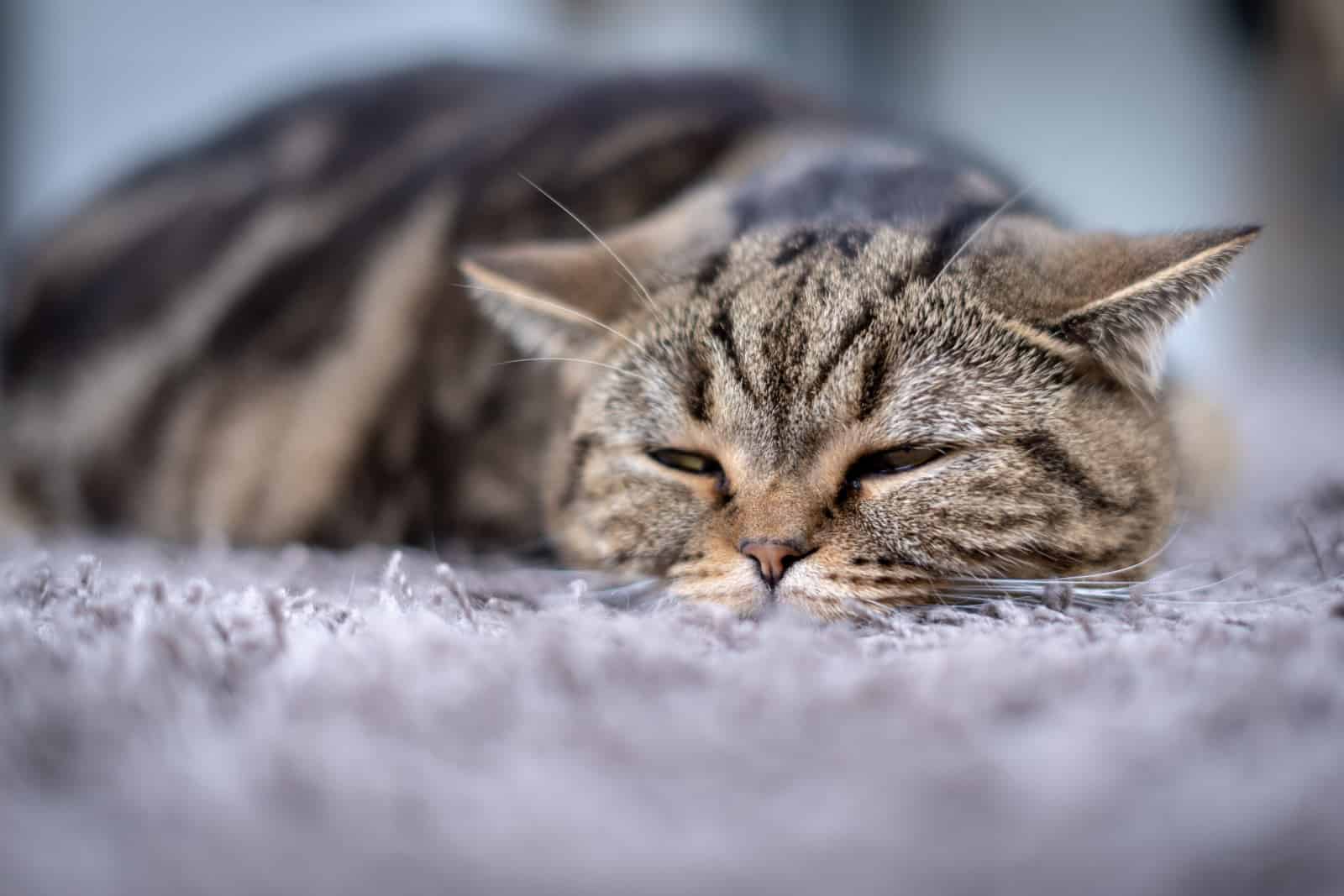
1. Swelling Or Redness At The Incision Site
Swelling or redness at the incision site can be a sign of infection as the body’s immune system reacts to bacteria or other microorganisms at the site.
When the body senses the presence of these foreign invaders, it mounts an immune response to try to remove them. This can cause swelling and redness as the blood vessels in the area dilate and more blood flows to the site.
The body also releases chemicals called cytokines that can cause inflammation, causing redness around the incision site.
2. Discharge From The Incision Site
Discharge from the incision site, which may be in the form of pus or drainage, can be a sign that the incision has become infected.
In fact, discharge from the incision site is one of the most common signs of an infection!
The discharge, which is a mix of white blood cells and bacteria, is usually cloudy or discolored and may have an unpleasant odor.
The presence of pus signifies that the cat’s body is trying to fight infection. When the area around the incision site becomes infected, the body sends white blood cells to the area to fight off the bacteria or other organisms causing the infection.
As the white blood cells attack the bacteria, they release chemicals that break down the bacteria, resulting in pus formation. This pus can escape through the incision site, leading to the discharge.
3. Bleeding From The Incision Site
Because an infection can cause the tissues near the incision to swell and become inflamed, which increases pressure within the tissues, bleeding from the incision site may be an indicator of an infection. The sutures may break under the additional strain.
Additionally, if the sutures are not placed correctly or tied securely, the incision may not be properly closed, which can cause bleeding.
4. Excessive Licking Of The Incision Site
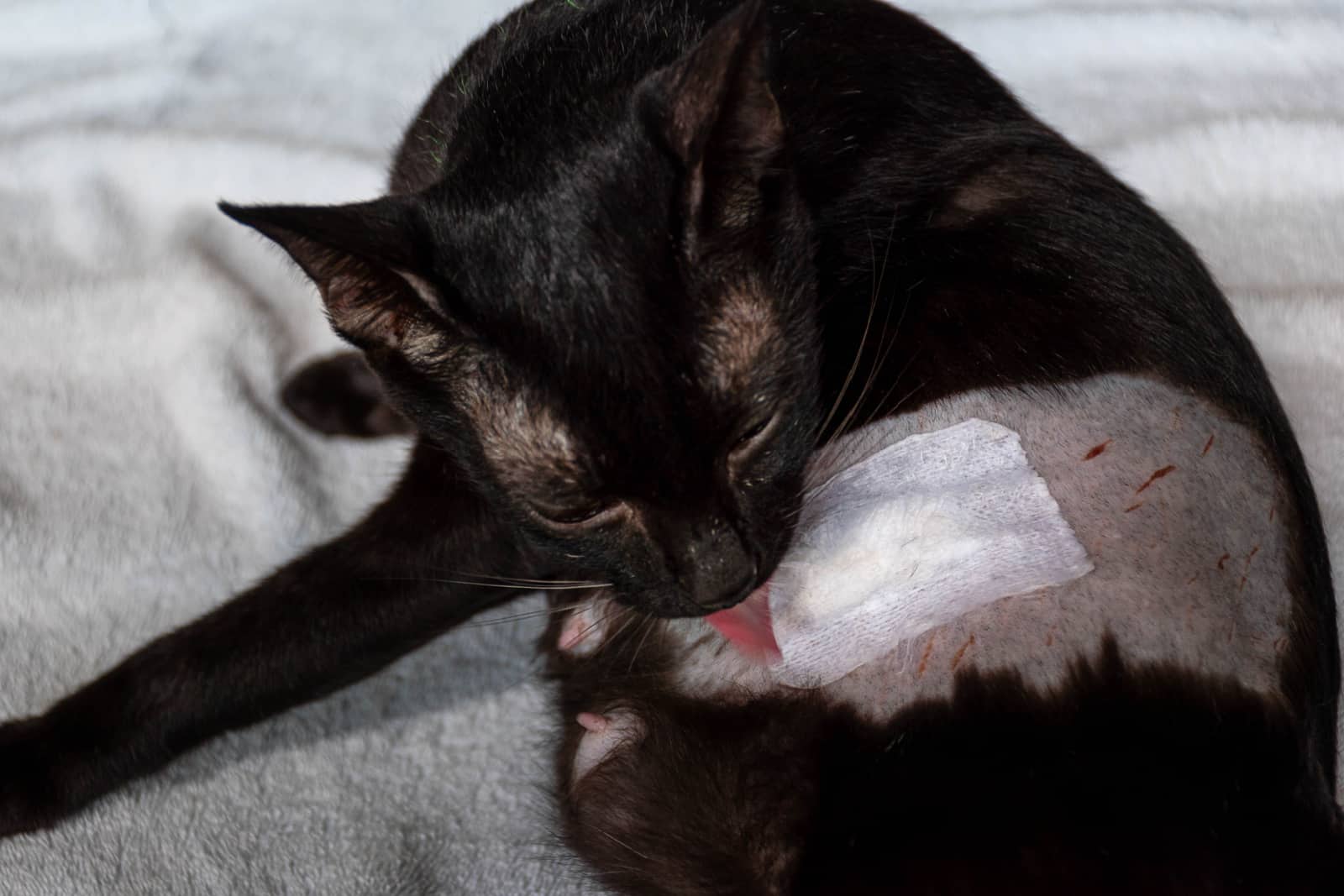
Excessive licking of the incision site can be brought on by pain or discomfort following the procedure as well as a response to the sutures.
This happens because cats are instinctively drawn to licking their wounds!
If a cat licks the area of an incision, it may be trying to clean the wound and signal that there may be an infection.
The incision site may become more irritated as a result of the cat’s licking, which may result in even more discomfort, swelling, and redness.
5. Pain Or Tenderness At The Incision Site
Your cat may show signs of pain if the incision site is infected.
Pain or tenderness at the incision site can often indicate the presence of an infection. This can be due to bacteria or other microorganisms in the wound.
The body’s immune system responds to the presence of these microorganisms by releasing chemicals that cause inflammation, which can cause pain.
In addition, the immune system’s response to infection may cause swelling, which can be an additional source of pain for the cat.
6. Lethargy And Lack Of Appetite
Lethargy can occur due to infection because the cat’s body is using up energy to fight off the infection!
Because the cat’s immune system is battling the illness, which may impact how the body processes and absorbs nutrition, lack of appetite might be another indication of infection.
In addition, some infections, such as gastrointestinal infections, can cause nausea or vomiting, making it difficult to eat.
7. Fever
It is also common for pet owners to notice their cats having fever due to an infection.
A fever is a sign that the cat’s body is fighting off an infection, as the body’s immune system is working to fight off a pathogen (usually bacteria).
In fact, the same thing happens in the human body as well!
8. Vomiting And/Or Diarrhea
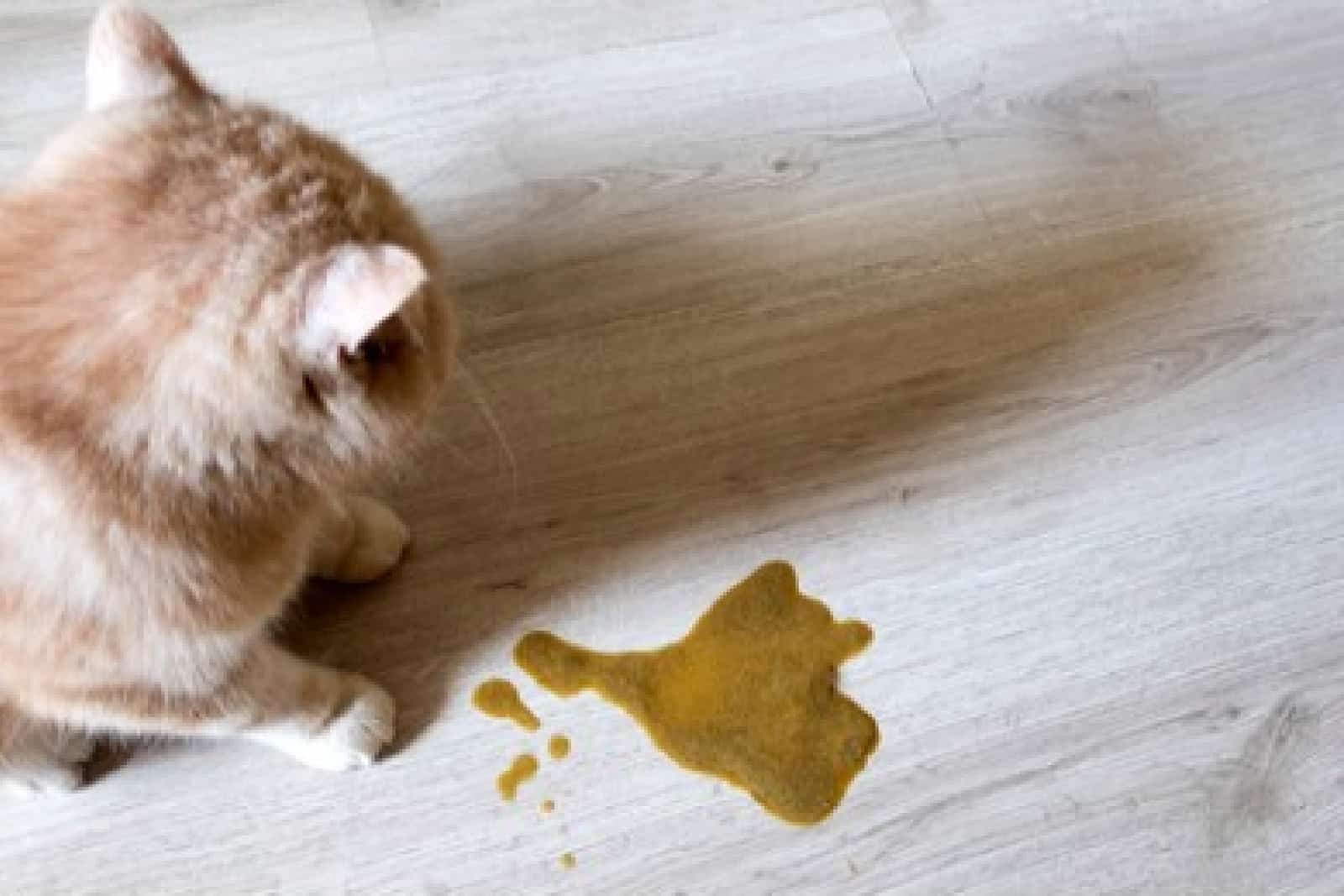
Vomiting and diarrhea can occur due to an infection. However, it’s important to note that vomiting and diarrhea are not direct symptoms of infection.
Vomiting and diarrhea after neutering surgery can be caused by various factors, such as the anesthesia used during the surgery. Many cats experience side-effects of anesthesia!
However, combined with other symptoms of an infected neutering incision, vomiting and diarrhea can be considered a sign of infection.
Is Seroma A Sign Of Infection?
One potential complication is the formation of a seroma, a pocket of fluid that can build up at the surgery site.
This fluid buildup can delay proper healing and even lead to further complications if left unchecked.
A seroma is not necessarily a sign of infection, but it can be a complication that arises after surgery. While a seroma is not an infection, it can signify that the cat’s body is having difficulty healing properly.
If left unchecked, a seroma can lead to further complications, such as infection or scarring.
If you suspect your cat has a seroma, you must contact your cat’s healthcare provider or veterinarian for proper treatment. They may recommend draining the fluid or prescribe medication to help reduce swelling and promote healing.
A Brief Overview Of The Neutering Process
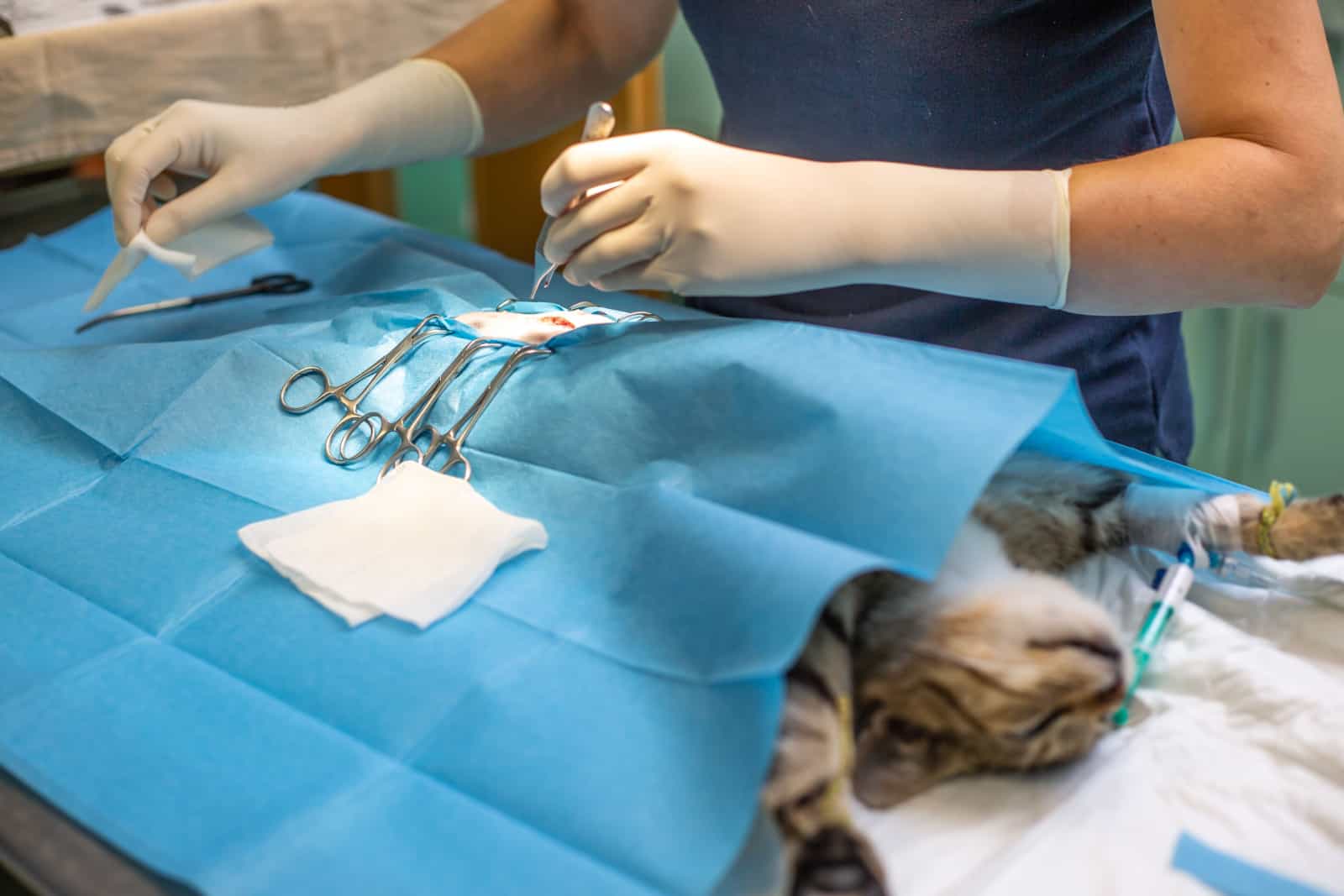
• Neutering is a surgical procedure that involves the removal of the testicles in a male cat.
• During the neuter procedure, the veterinarian will make an incision in the scrotum to access the testicles, and when the testicles are then removed, the incision is closed with sutures.
• Most cats can go home on the same day as the surgery.
• During the first week after the procedure, you should be monitoring the incision site for signs of an infection.
• The suture removal will typically take place about 7-10 days after the surgery
• Overall, neutering is a safe and standard procedure that can help prevent unwanted pregnancies and can also help reduce the risk of specific health problems in male cats.
Suggested: When Is It Too Late To Neuter A Cat? Read On To Find Out!
How Does An Infection At The Neutering Incision Site Arise?

• Entry of pathogenic bacteria from the environment
If the surgical incision site is exposed to contaminated surfaces or materials, it may become infected.
• Poor sterilization of surgical instruments
Poor sterilization of surgical instruments can cause an infection due to bacteria and other potentially infectious agents on the instruments.
• Prolonged period between neutering and suturing
In rare cases, an infection may occur due to complications from the surgery itself. If the incision site is left open for a prolonged period, it may become infected or otherwise compromised.
• Poor post-operative wound care
If the incision site is not kept clean and dry, bacteria can enter the site and cause infection.
• Poor nutrition or immune system of the cat
An impaired immune system can also make a pet more susceptible to infection by reducing its ability to fight off the bacteria or viruses that cause infection.
• Not giving the cat antibiotics on time
Antibiotics are not given to every cat after neutering. This decision is up to the veterinarian and depends on the cat’s health and medical history.
In some cases, antibiotics may be prescribed, such as if the cat has a higher risk of infection due to age or other health concerns, but it is not a universal practice.
How Is Incision Site Infection Treated?

Treatment typically involves a course of oral or intravenous antibiotics, which your vet will prescribe.
It is important to follow your veterinarian’s instructions and administer the antibiotics as directed, as the efficiency of antibiotics drops if they’re not used properly.
In addition to antibiotics, your veterinarian may recommend other treatments to help resolve the infection and promote healing.
This may include cleaning the incision site or administering pain medication.
Can I Treat Incision Site Infection At Home?
It is not recommended to treat an incision site infection at home!
Treatment of an infected incision site may include antibiotics and other methods to resolve the infection, which you cannot provide for your cat (but a vet can!).
It is important to seek veterinary care if you suspect that your cat’s incision site is infected!
When Is It Time To Take My Cat To The Vet?
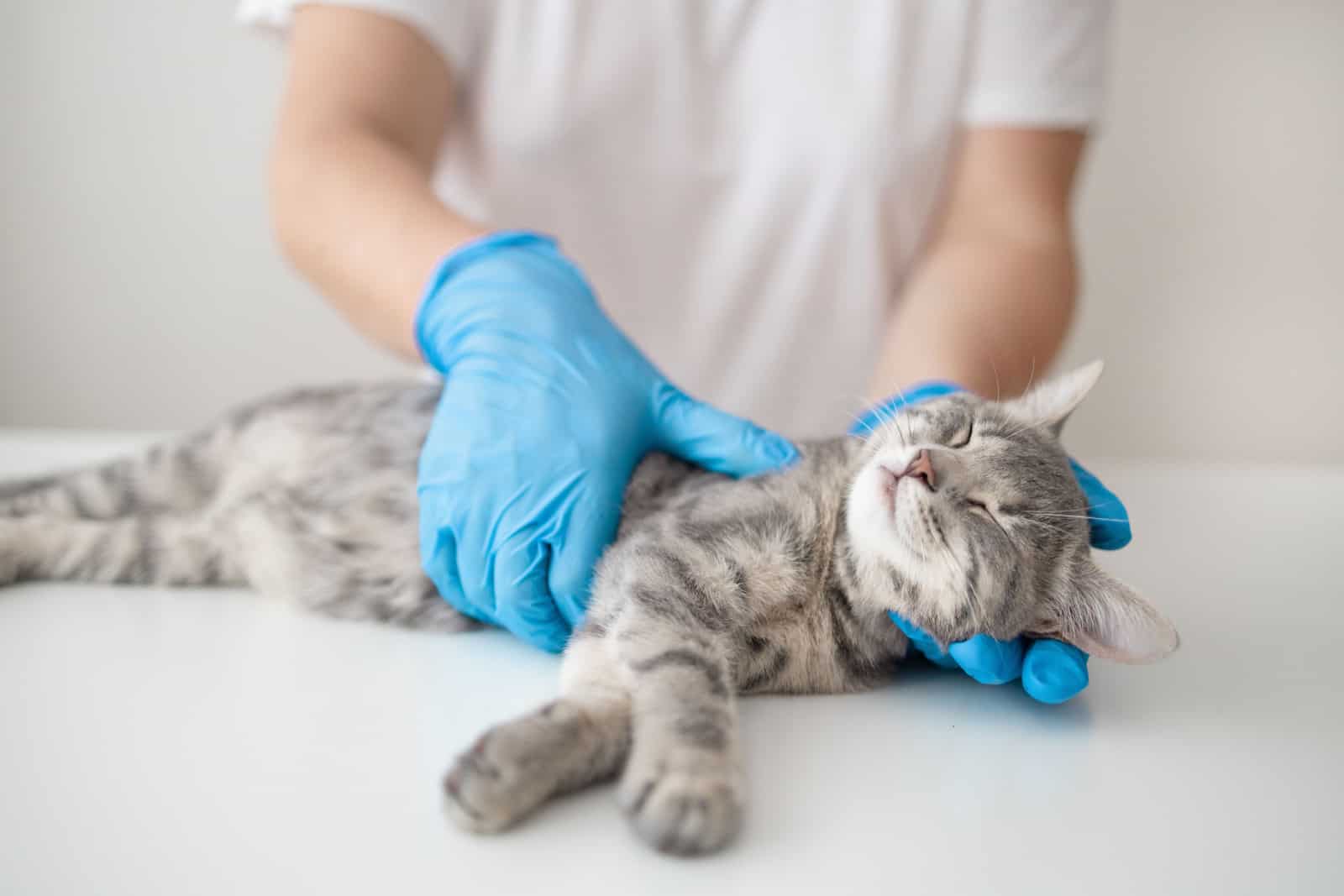
Going to the vet might be needed sooner than you think.
Signs of infection after neutering a cat include, as mentioned, swelling or redness at the incision site, discharge of bleeding from the incision site, excessive licking of the incision site, pain or discomfort, lethargy, poor appetite, vomiting and/ or diarrhea, and fever.
If you notice any of these signs of an infected neutering incision, it is crucial to seek veterinary care as soon as possible!
While it is generally a safe and routine procedure, there is always a risk of complications, including the possibility of life-threatening complications, especially if the infection is left untreated for a long time.
If a cat experiences complications during or after a neutering procedure, it may be necessary to seek emergency care at a veterinary clinic.
In some cases, the cat may need to be admitted to the intensive care unit for further treatment and evaluation of the best course of action.
What Should A Healing Cat Neuter Incision Look Like?
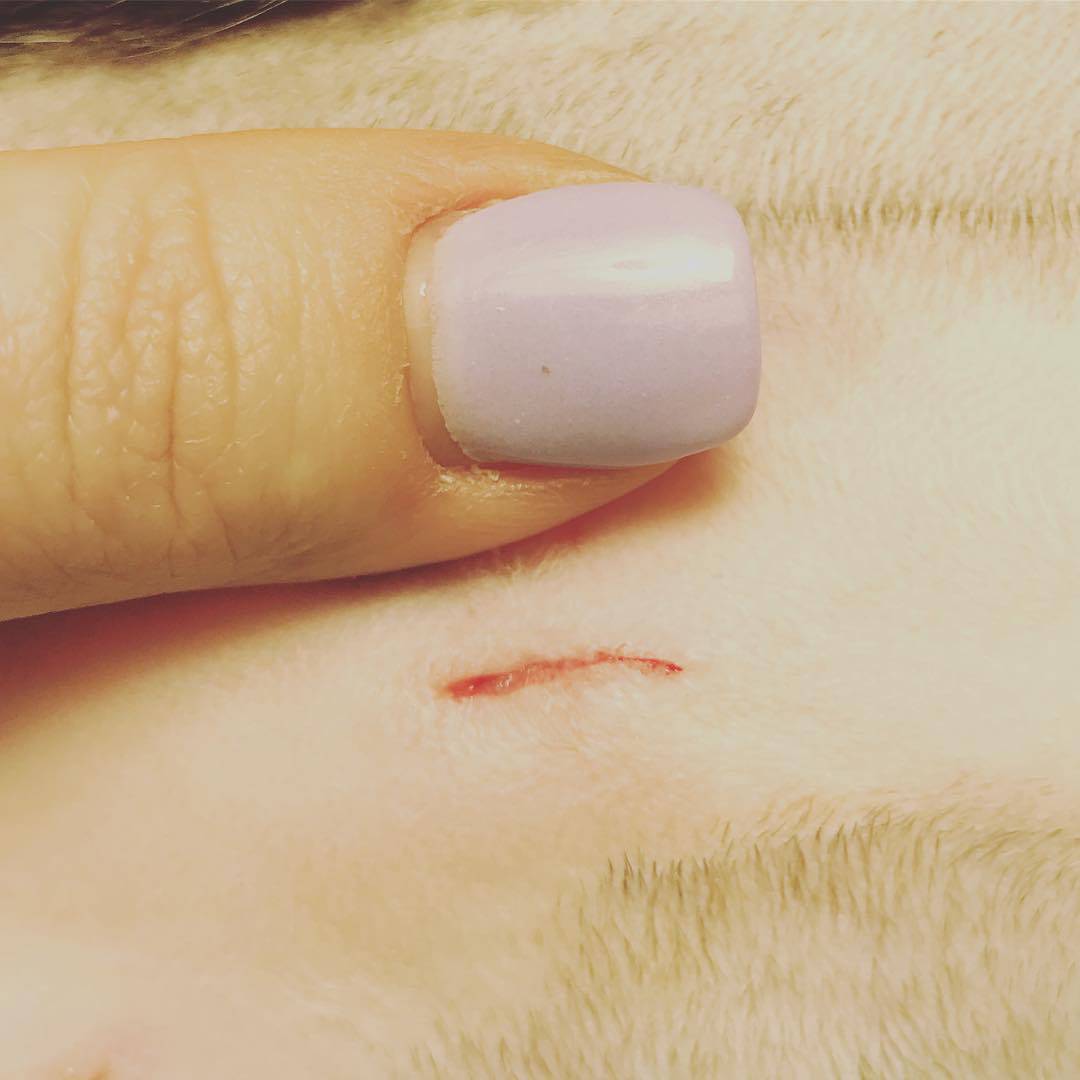
A healing cat neuter incision should look like a thin, straight line, and will be pink around the edges.
Over a few weeks, the incision will heal, and the hair will eventually grow back.
The incision site will probably disappear after some time!
slika zdravog healed incision site-a
How Long Does The Healing Process Last?
Most neuter (and spay) incisions take about two weeks to heal.
However, the healing process can be prolonged if an infection develops!
If an incision becomes infected, it can take longer to heal and may require additional treatment.
The length of time it takes for an infected incision to heal will depend on the severity of the infection and the effectiveness of the treatment.
Pro Tip: Get Your Cat A Collar
I suggest getting your cat an Elizabethan collar to speed up the healing process.
An Elizabethan collar, also known as an “E-collar” or a “cone collar”, can be used to prevent an animal from licking or biting at a wound or incision.
If your cat has an incision that is prone to infection, or if your cat is prone to licking or biting at the incision site, an Elizabethan collar may be a helpful tool to protect the incision and promote healing.
What Can I Do To Help Prevent An Infected Neutering Incision Site?
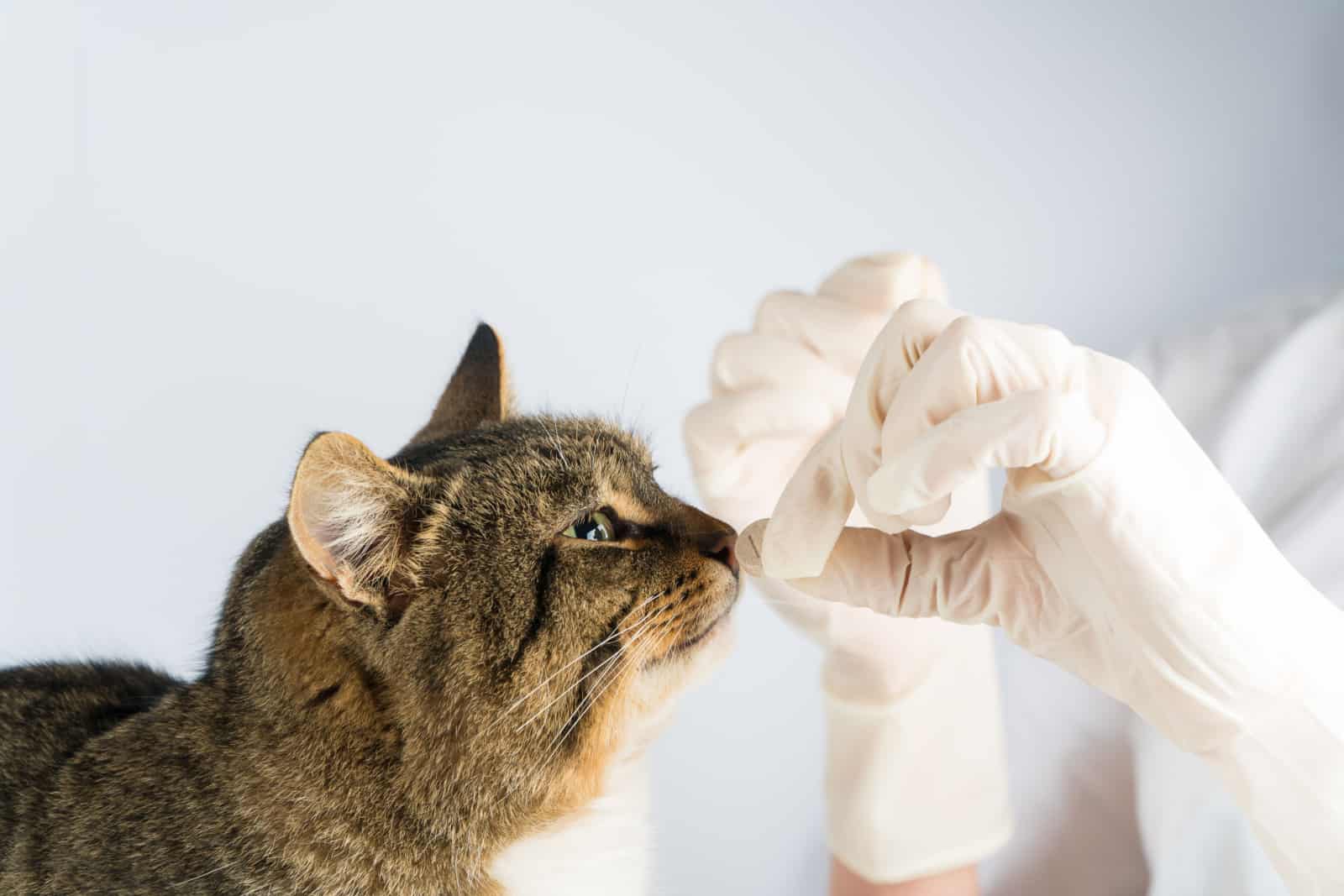
• Keep the incision clean and dry. If the incision site becomes dirty or wet, gently clean it with a mild, non-scented soap and pat it dry.
• In the first few days after surgery, the incision site should be checked for sutures that may have come undone.
• Follow your vet’s instructions for administering medications such as antibiotics.
• Monitor the incision site for any signs of infection, such as redness, swelling, and discharge. If you notice any changes, contact your veterinarian immediately.
• Keep the area around the incision site clean and free of debris. Gentle cleansing with warm water can help remove any debris or dirt around the surgical site. Do not use alcohol or hydrogen peroxide unless your veterinarian specifically tells you to.
• Avoid rough play with your cat, as this can cause injury to the incision site.
• Do not pick at the scab, as this can interfere with the healing process and increase the risk of infection.
Importance Of Preventing Infection From Arising (If Possible)
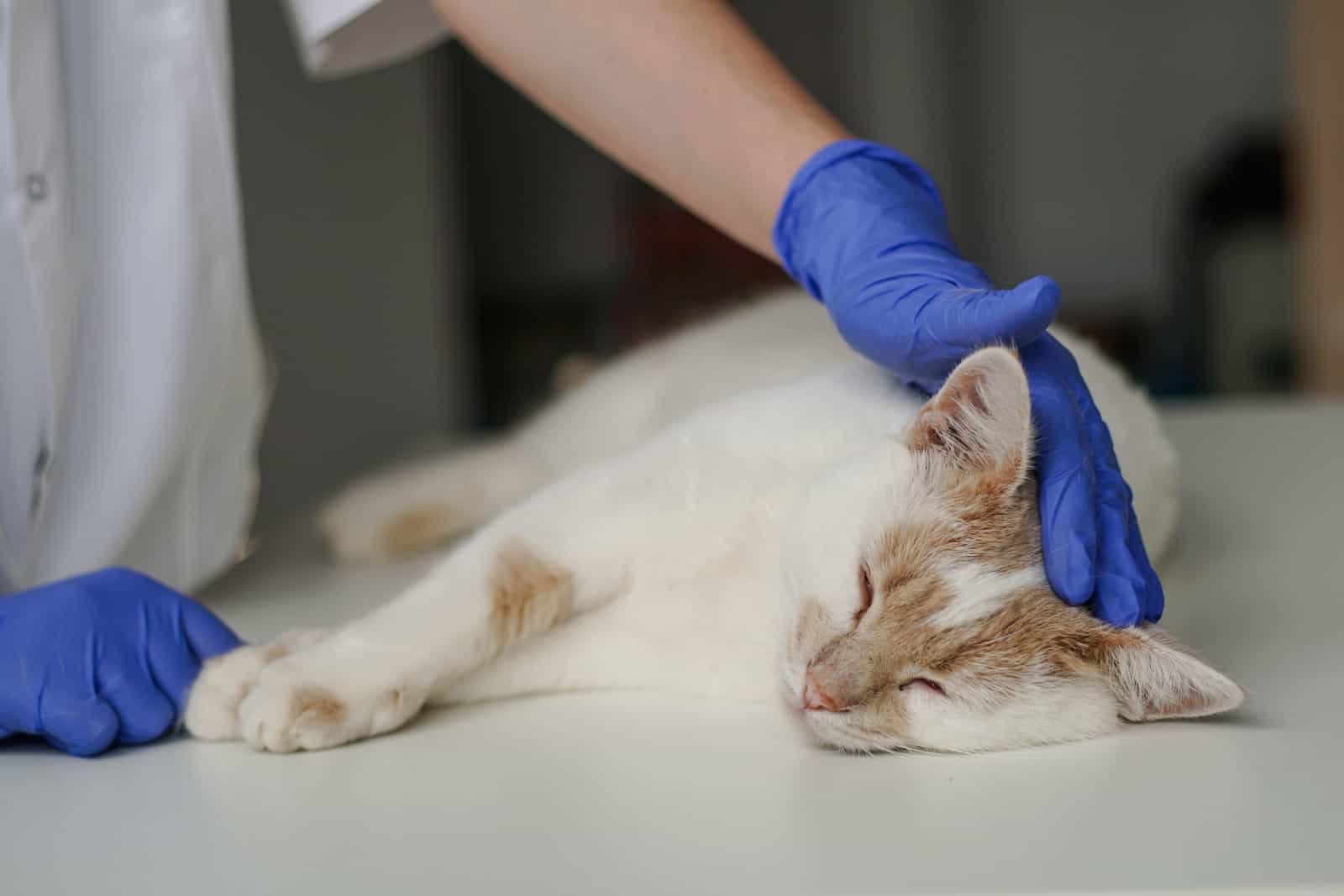
Preventing an infected neutering incision site is important for several reasons:
• Infection can cause serious complications for your cat, including pain, discomfort, and potential organ damage.
• An infected incision site might also prolong your cat’s recovery
• Infection can also lead to additional medical treatment and cost
Therefore, it is important to follow the post-surgery care instructions provided by your veterinarian and to monitor the incision site for any signs of infection.
If you notice any unusual discharge or swelling, or if your cat is experiencing other signs of discomfort or distress, contact your veterinarian immediately!
In Conclusion
And that’s it! I hope you found this article useful!
But let’s go over the most important facts once more!
It is very important to be aware of the signs of infection after neutering a cat, and I’ve listed and explained to you all the symptoms you should be on the look-out for!
Early detection of signs of infection after neutering a cat, and proper treatment, will ensure your cat remains healthy!
I’m confident your feline will be perfectly healthy, just keep an eye on the signs of infection after neutering and treat them quickly if they arise!
Related Articles:
• Dealing With An Infected Spay Incision In A Cat

